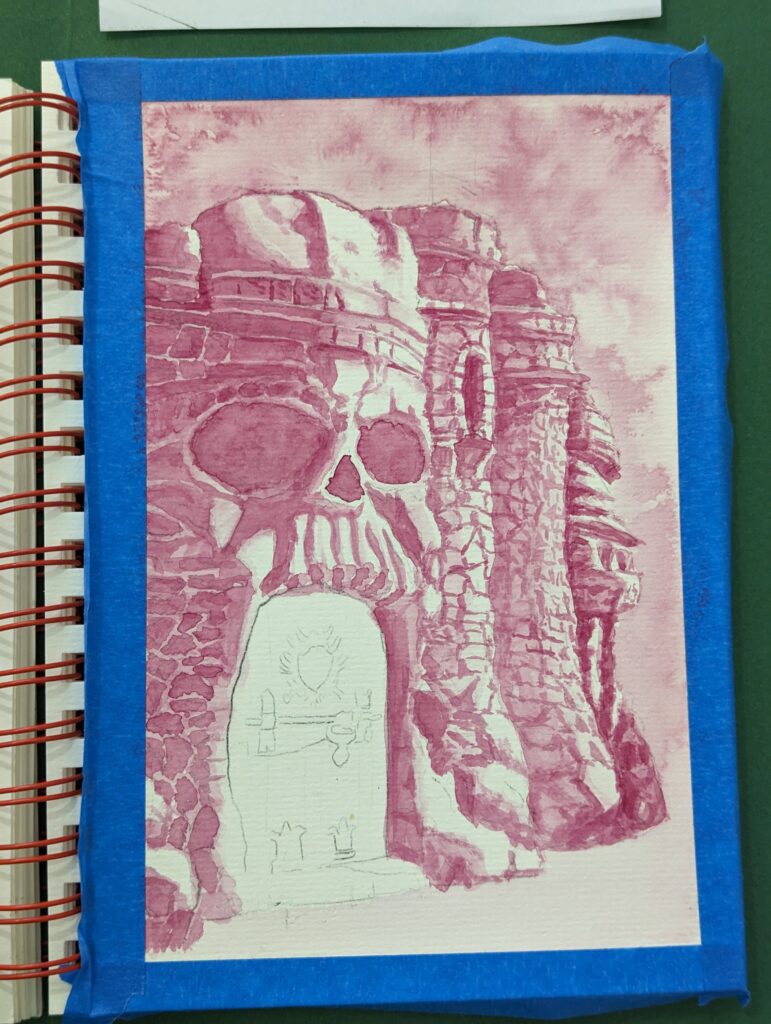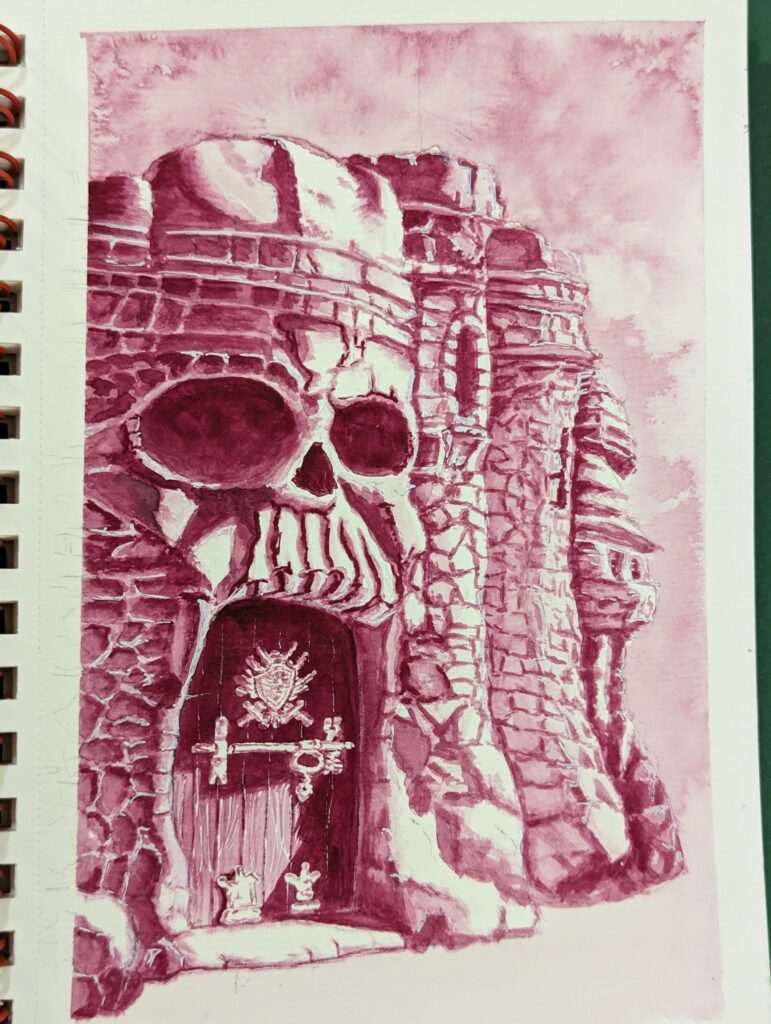Easy layering in watercolor
Watercolor is a technique in which traditionaly, the pigment is applyed by layers, (and I say traditionally because there are some very impressive examples of artists that use watercolor in a single layer obtaining wonderful results) going from the lightest one to the darkest one. This process involves the right mixing of the paint with the right amount of water for each layer. Going from the less pigmented mix to the more heavily pigmente one.
The first layer is usually a very light one, meaning that the amount of pigment is kept to the minimum in proportion to the water you are mixing it. This will result in a very light layer of paint in the canvas, indicanting us which áreas will be more iluminated and which are kept in shadows. Take in account that the ideal brightest áreas are kept completly white, meaning that no pigment would be applyed in them (for this I recommend using a masking liquid).

The second layer is where your mid-tones are applyed, meaning in parts where light doesn´t shows directly but is still iluminated. The mixing of the paint applyed for midtones, tends to be somewhat more saturated in pigment in relation with water, resulting in a more intense and defined color.

Once the second layer is dry (its important to wait until each layer is completly dry, or use a hairdrier is also another option), then its time to apply the darker tones. These are applyed where shadows are casted or áreas where the light is not present. The mix of the pigment and water is more dense with the pigment more saturated than the previous layer.

These 3 layers are the basic layering with light-middle and dark tones, but feel free to experiment with more layers to give more richness in tonalities, but also the type of paper is important according with the number of layers planning to apply, it is recomended a 300 g paper, which is a thicker watercolor paper that can absorb more water.
Finally, I recommend some finishing touches for details, generally with a White gel pen or a White acrylic pen to represent some highlights in small places and also a black fineliner or pen with waterproof ink, in order to accentuate more shadows or completly black objects. Adding a more range of values to your drawing from the brightest one (White gel / acrylic pen to the darkest (black fineliner /pen).

Also I have seen some very Good examples of adding lights with White gouache, just being careful not to overuse this resource, and keep it only for details.
Leave a Reply